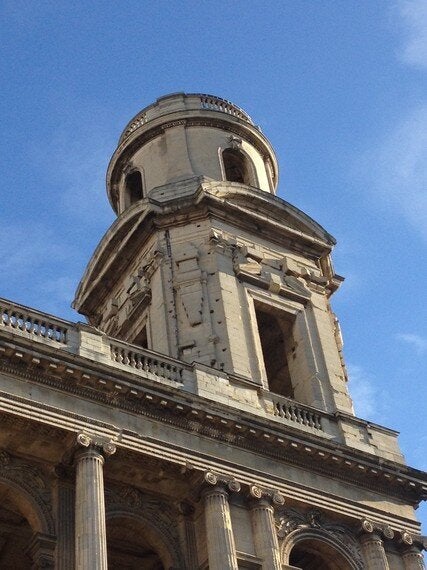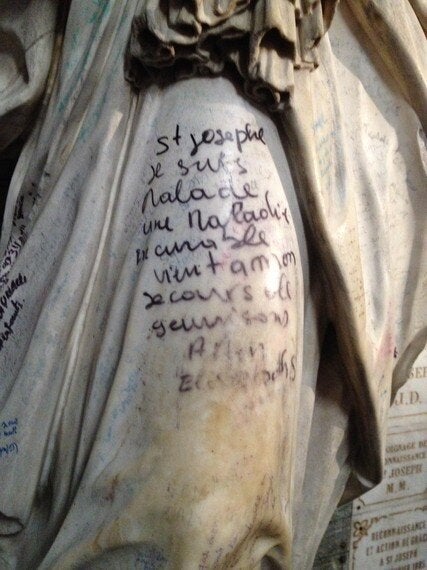Thursday and I am on the train to Paris. Not that the early part of the week was dull in London. In fact, far from it. Masterpiece is a buzz of stand allocation puzzles, with the pieces moving rapidly over the board and finally beginning to settle. This coming year is shaping up really well with the vast majority of our current exhibitors finding their places and a few new ones being slotted into their new homes. Also my friends in Madrid have found some treasures so I am off there next weekend. Finally Mrs Sungoose had her annual jewel fest at our house and, whilst I lurked in the basement plying visitors with Aperol spritz, followed by Daiquiris and finishing off with espresso martinis, she sold and sold and sold in the rest of our Stockwell schloss.
But here I am on the train speeding with the rising day back to Paris. From the Gare du Nord, Giles (from Mallett) and I walk purposefully down to the Drouot. Most of the sales view on Thursday and sell on Friday, so the obvious day to view is Thursday. One has time to consider, reflect and then bid. However, in a cruel and eccentric twist, the rooms have a rule that display cases cannot be opened on Thursday, only on the morning of the sale. I am used to it, and if you really kick up a fuss, they will open them, but you do have to be fierce and insist. It is very French, but when you succeed in buying you really have a sense of having won!
We quickly cover the ground and head on. It is always a race against time on these days as lunch closes everywhere and you therefore have to disembark from the train swiftly and get cracking. In at 10.30, finished for lunch at 12.30. After lunch you can carry on, as most shops open after 2.30pm and stay open until 7pm. Giles hates stopping, he chaffs and rails against the enforced pause. His Spartan workaholic spirit is both appalled and shocked by the frustration that lunch imposes. But, with a plate of food and a glass of sparkling water, his mood improves as I sip at my rosé and devour my onglet with onions and chips. The onglet is a much maligned cut. It is a strip that comes from between the cow's 12th and 13th rib near the liver and kidneys. It thus has a not unsurprising offal quality, lending terrific flavour and texture, and is a haiku on Frenchness. Americans love it too and dub it hanger steak.

Shopping recommences and we pass by the auction house Tajan in the rue des Mathurins. The building is Art Deco and is a pleasure to visit even if the items on view are often not particularly scintillating. It is not slick and done up, but has a charming, slightly run down feel, which makes the whole ambience seem much more authentic.
Then on to Pelham Galleries, not really, but sort of. It is not called Pelham but it de facto is. The business is housed in the old Etienne Levy shop in the rue de Varenne and has been for some years. The area used to teem with dealers but now he is practically the only one left. The shop has been recently refurbished and looks very well, full of the boss, Alan's, usual originality and fantasy in buying. He is a great enthusiast and though we did not see him, rather Dennis his assistant, we were impressed by the musical debris surrounding a beautiful Viennese piano he had just bought. He had clearly just been playing it, as sheet music was everywhere. It was rather wonderful to see this work of art in full flood, alive almost, not just as a cold object awaiting sale.
The day concluded after much walking, hopping on and off buses and journeys down into the labyrinthine complex of the Metro; we quaffed Champagne at a Christmas drinks party taking place across several galleries in the Carré Rive Gauche (the grid of antique shops that starts on the Quai Voltaire and finishes at the Boulevard Saint-Germain). Finally, we withdrew to Le Bistro de Paris in the rue de Lille. The decor is everything that one hopes to find; mirrors, gold and pendant naturalistic electric lights surround marble-topped tables and cafe chairs. Waiters flow in and out of swinging doors carrying silver trays, all wearing aprons over black suits. In short we are in Paris. Oysters (fines de claires), veal sweetbreads and dark wine from Provence follow and then sleep shortly afterwards.
Giles disappears back to London and I settle into a weekend in Paris. I visit the Musée d'Orsay to see the Hungarian art, a show that demonstrates the intimate links between 1900s Paris and the artistic communities of Vienna and Budapest. The show runs until January. Then I speed up to Clignancourt and the flea market that still thrives. Usually I go first thing in the morning and find most of the kiosks shut. This Saturday, I went at midday and I found a heaving throng. The aisles were rammed and the voices of American decorators, followed by their teams, were audible in all corners of the market.
Sunday morning and the sky was bright blue. The streets were mainly empty and quiet and the city seemed peaceful and resting. I wandered over to the Place Saint-Sulpice and, at the Café de la Mairie, settled down to people-watching, cups of coffee and a croque-monsieur made with Poilâne bread. The café is beyond unpretentious, it is dynamically basic. The brown, plastic, simulated leather chairs counterpoint with the dirty, plastic, aluminium-rimmed tables. The staff wander around with a sense of gloom and spill things constantly. From the counter, there was a persistent drip of milk to the floor. But the coffee is perfect and the croque made from this brand of robust rye-enriched sourdough is a revelation. It is worth it all and some more to crunch and chew your way through this classic but innovatively created dish.

Afterwards, I wander over to the church. Saint-Sulpice proclaims itself the second-largest church in Paris. It reminds me of Heston Blumenthal, who was once asked how his restaurant, The Fat Duck, ranked in the world. His reply was that he was 'in the top two'. Not 'number two', but 'in the top two'. However you read it, the answer is not number 1. Poor Saint-Sulpice is in the top two.

Wandering around inside, the air was smoky, thick and aromatic with incense and I felt a real sense of the significance of the day and time. Visitors to the church get excited by the gnomon, a great word referring to an 18th century sundial for measuring the equinoxes and thereby Easter. It featured in Dan Brown's The Da Vinci Code. They also marvel at the wonderful 18th century fonts by Jean-Baptiste Pigalle and the intense frescos by Delacroix. But I was drawn to a small chapel at the back. In it stands a white marble statue of St Joseph. Graffiti is all over Paris, from the railways to Serge Gainsbough's house, and the artistic graffiti by Banksy and Invader. Here in this dark scented chapel the white marble has been bedecked with writing. I drew closer and saw on St Joseph's knee, in cursive script, a plea: 'Help me', it said, 'I have an incurable disease'. The writing ends with a smudge. Elizabeth's name is visible. I imagine the smudging hand placed on the recently applied black letters. I see a head bowed, a desperate request for help read aloud to the Saint. I found this hope, offered amid hopelessness, unbearably touching. I left and lit a candle for Elizabeth. Someone I will never meet, but for whom I hope some succour came. I walked out back into the bright blue, grateful for all I have.
